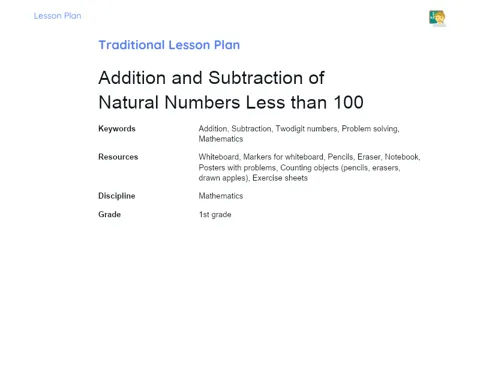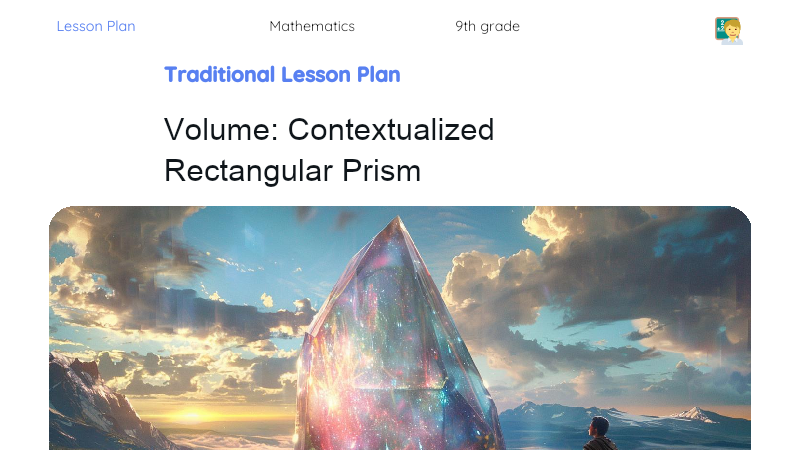Objectives (5 minutes)
- Understand the concept of a trigonometric equation - The teacher must ensure that students understand what a trigonometric equation is, how it is formed and what variables are involved. This includes reviewing the basic concepts of trigonometry, such as sine, cosine and tangent.
- Develop trigonometric equation solving skills - The teacher should teach students how to solve trigonometric equations step by step, using methods such as applying trigonometric identities and using tables or calculators.
- Apply acquired knowledge to solve practical problems - The teacher should encourage students to apply what they have learned to solve practical problems, such as finding the value of an angle or a trigonometric expression in a real-world context.
Secondary objectives:
- Promote collaboration and discussion in the classroom - The teacher should encourage students to discuss and share their ideas and strategies while solving problems, promoting collaborative learning.
- Stimulate critical thinking and problem solving - The teacher should propose challenging problems that require the use of critical thinking and problem-solving skills, in order to develop these competences in students.
Introduction (10 - 15 minutes)
-
Review of basic trigonometry concepts - The teacher begins the lesson by recalling the fundamental concepts of trigonometry, such as sine, cosine, and tangent. He can do this through a quick theoretical review or solving simple problems involving these trigonometric functions. (3 - 5 minutes)
-
Contextualized problem situations - The teacher then presents two problem situations that require the use of trigonometric equations to be solved. For example, determining the length of a side of a right triangle or the value of an angle in a trigonometric circle. The teacher emphasizes that solving these situations requires the knowledge and application of the trigonometric equations. (5 - 7 minutes)
-
Introduction to the topic - The teacher then introduces the topic of the lesson, trigonometric equations, explaining that they are mathematical expressions that involve the trigonometric functions and that solving these equations allows us to find the value of the angles or the trigonometric expressions. He can present some examples of simple trigonometric equations and show how to solve them. (2 - 3 minutes)
-
Curiosities and practical applications - To arouse students' interest, the teacher can share some curiosities or practical applications of trigonometric equations. For example, he can mention that these equations are widely used in areas such as physics, engineering, architecture and astronomy to solve problems involving angle and distance measurements. In addition, he can mention that trigonometric equations have a long history, dating back to ancient times, and that they were used by ancient civilizations such as the Greeks and Babylonians for the construction of monuments and navigation. (2 - 3 minutes)
Development (20 - 25 minutes)
-
Modeling Activity with Strings and Triangles (10 - 15 minutes)
-
Material preparation: The teacher should prepare in advance a series of strings of different lengths and colors. He should also have a set of triangles of different sizes on hand.
-
Group formation: The students should be divided into groups of three or four. Each group will receive a string and a set of triangles.
-
Carrying out the activity: The teacher should instruct the students to form different triangles with their strings and place them on a table. They should then be instructed to measure the interior angles of each triangle with a protractor and record the values. Afterwards, the students should be instructed to identify which trigonometric functions (sine, cosine and tangent) would be used in the trigonometric equation for each triangle. Finally, the teacher should ask the students to solve the trigonometric equations to find the value of one of the trigonometric functions given the value of another.
-
Discussion and sharing: After the activity is completed, the teacher should lead a classroom discussion, where each group shares their findings and difficulties. The teacher should clarify any questions and highlight the key points of the activity, such as the relationship between the angles of a triangle and the trigonometric functions, and the process of solving trigonometric equations.
-
-
Contextualized Problem Activity (10 - 15 minutes)
-
Material preparation: The teacher should prepare a series of practical problems that involve the use of trigonometric equations. The problems should be varied in terms of difficulty and context.
-
Group formation: The students should remain in their groups.
-
Carrying out the activity: The teacher should distribute the problems to each group. The students should be instructed to read each problem carefully, identify the necessary trigonometric equation, and solve the equation to find the answer. The teacher should circulate around the room, providing support and guidance as needed.
-
Discussion and sharing: After the activity is completed, the teacher should lead a classroom discussion, where each group shares their solutions and strategies. The teacher should clarify any questions and highlight the key points of the activity, such as the application of trigonometric equations to solve real-world problems.
-
By the end of the development, students should have a clear understanding of the concept of a trigonometric equation, be able to solve these equations step by step, and apply this knowledge to solve practical problems. In addition, they should have developed collaboration, critical thinking and problem-solving skills.
Feedback (10 - 15 minutes)
-
Group discussion (5 - 7 minutes)
- The teacher should gather all the students and promote a group discussion. Each group will present the solutions or conclusions found during the activities carried out. Each presentation should last no more than 3 minutes.
- After each presentation, the teacher should ask questions to check the students' understanding of the trigonometric equations, the steps used to solve them, and how they applied this knowledge to solve the proposed problems.
- The teacher should encourage students to ask each other questions, facilitating dialogue and the exchange of ideas among students.
-
Connection to theory (3 - 5 minutes)
- After the presentations, the teacher should make a general review of the activities, highlighting the main concepts and strategies used by the students to solve the trigonometric equations.
- The teacher should then make the connection between these concepts and strategies with the theory presented at the beginning of the class, reinforcing the importance of understanding the basic concepts of trigonometry for solving trigonometric equations.
- The teacher should also reinforce the applicability of these equations in everyday life, mentioning again the curiosities and practical applications presented in the Introduction.
-
Individual reflection (2 - 3 minutes)
- To conclude the lesson, the teacher should propose that the students reflect individually on what they have learned. He can do this through questions such as: "What was the most important concept you learned today?" and "What questions have not yet been answered?"
- Students should be encouraged to write down their reflections and share them with the teacher, if they wish. The teacher can use these reflections to assess the students' understanding and to plan future lessons.
This feedback is essential to ensure that the objectives of the lesson have been achieved and to identify any gaps in the students' understanding. In addition, by promoting discussion and reflection, the teacher is encouraging active learning and self-assessment, which contributes to the consolidation of learning.
Conclusion (5 - 10 minutes)
-
Summary and recapitulation (2 - 3 minutes): The teacher should begin the conclusion by reiterating the main points of the lesson. He should summarize the concept of trigonometric equation, the methods for solving it and the practical application of these equations. In addition, the teacher should recapitulate the skills and knowledge that the students have acquired during the lesson, highlighting the importance of understanding the basic concepts of trigonometry for the effective resolution of trigonometric equations.
-
Connection between theory, practice and applications (2 - 3 minutes): The teacher should then emphasize the connection between the theory presented at the beginning of the lesson, the practical activities carried out and the real applications of trigonometric equations. He should explain how the examples and activities in the classroom helped the students to understand and apply the theory, and how the knowledge acquired can be useful in everyday situations and in other subjects.
-
Extra materials (1 - 2 minutes): The teacher should then suggest some extra materials for those students who wish to deepen their understanding of trigonometric equations. These materials may include:
- Websites and online videos that explain the concept of trigonometric equation and offer examples of how to solve it.
- Math textbooks that present a detailed approach to trigonometric equations.
- Additional trigonometric equation exercises for students to practice at home.
-
Importance of the topic (1 - 2 minutes): Finally, the teacher should emphasize the importance of trigonometric equations for real life. He should mention again the practical applications of these equations, such as in physics, engineering, architecture and astronomy, and how the ability to solve trigonometric equations can be useful in a variety of everyday situations. In addition, the teacher should reinforce that understanding trigonometric equations is fundamental for students' progress in mathematics and in other subjects that involve trigonometry.



